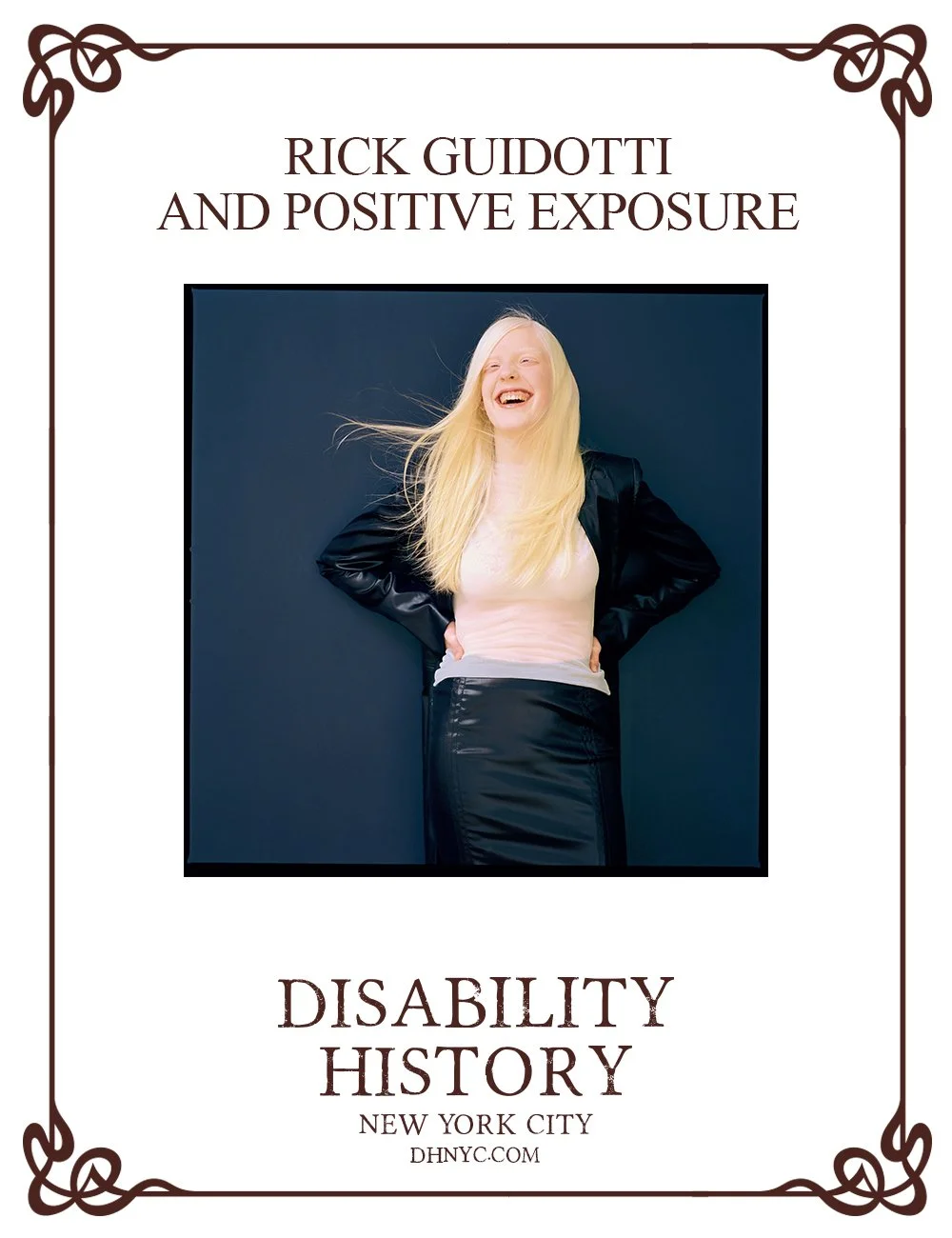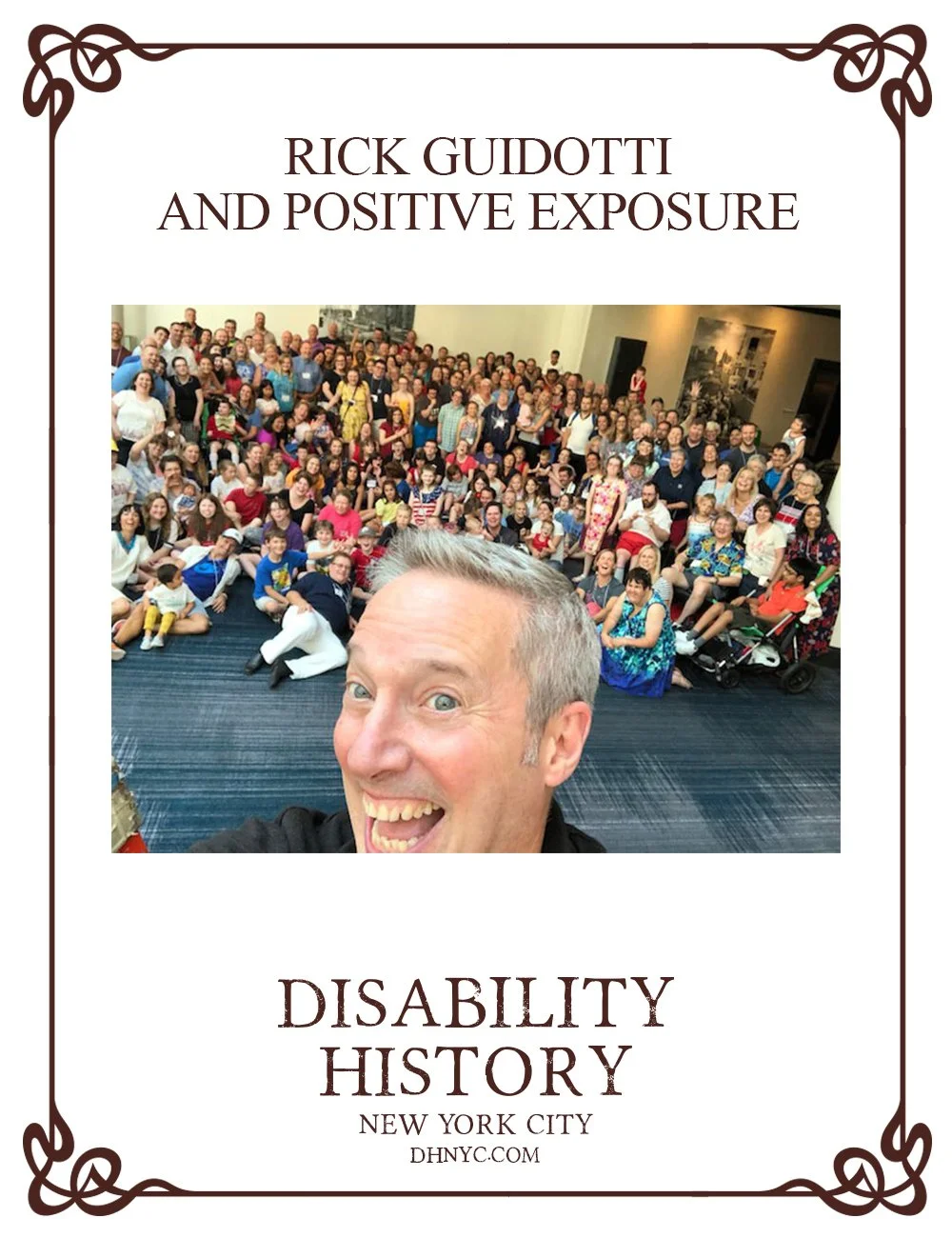RICK GUIDOTTI AND POSITIVE EXPOSURE
In Image No. 1 – the pivotal photo of Christine, then a teenager.
Rick Guidotti is a force of nature. Ask him a question and the responses tumble out, one perfectly-turned paragraph after another, each studded with joyful anecdotes. You have no doubt that he’s made these points before, but it doesn’t matter--there’s no resisting his enthusiasm. “Positive Exposure” is the only conceivable name for his unique arts space.
Rick was reluctant to focus on himself as an individual—“I’m an Italian kid from Philadelphia” was about all I could get out of him. He only wanted to talk about the work.
In 1997, Rick was a successful fashion photographer, living in New York, Paris and Milan. Revlon, Yves Saint-Laurent and Elle were frequent clients, and Claudia Schiffer and other top models were frequent subjects. “I loved it, it was fantastic,” Rick recently said to me, “but it was also really frustrating, because I was always getting told what was beautiful, but as an artist I never saw beauty just on the covers of magazines.”
“I left my studio one afternoon, spotted this gorgeous kid waiting for a bus, who had albinism. She had this white hair, beautiful! She’d never be included in the beauty standard. She got on the bus and took off. I had to see more.” But images of albino beauty simply were not to be found, anywhere. Medical textbooks were especially problematic. They contained only the grimmest of images, with dehumanizing black bars across the subjects’ eyes. As Rick put it, from the look of them “not one of those people had ever had a slice of pizza, or told a joke.”
Rick’s search soon took him to NOAH (the National Organization for Albinism and Hypopigmentation). “I called them up and said I’m a fashion photographer, let’s show the world the beauty of albinism, it’s going to be amazing! They said get lost. They were afraid of exploitation; every time there’s a magazine article about a kid it was always sensational. I said ‘I agree with you. I can’t find one positive representation of albinism anywhere.’ And eventually, NOAH agreed to collaborate on a photo essay.”
“In walks this first kid, and she is just BEAUTIFUL! Her name is Christine. She’s fourteen. But she walks in with her shoulders hunched, head down, no eye contact, one word answers. That’s when I first became aware of the bullying, the teasing, that kids living with any kind of a difference experience every day. How am I gonna photograph her? Just the day before I’d shot Cindy Crawford on the same set in my studio, so out of respect for her I’m going to photograph her like I would any supermodel. So the fan went on and the music went on and I literally held a mirror in front of her and I said ‘Christine look at yourself. You are magnificent.’ And this kid just EXPLODED, with a smile that lit up New York City. And it was sustainable--the next day this kid walked into school not in the usual way, with her shoulders down. She had this new beauty in her own reflection. And her mother saw that, and it was like WOW, this is amazing!”
In Image No. 2 – a “selfie” of Rick Guidotti, with the Chromosome 18 Registry and Research Society.
The result was a 1998 cover story in Life magazine, titled “Redefining Beauty.” Rick’s five-page photographic essay highlighted people with albinism, and assailed the stigma, discrimination and exclusion that comes with physical difference. More work with people with albinism and other conditions followed, along with an exhibition at the Smithsonian Institute. The same year, Rick founded Positive Exposure as a not-for-profit dedicated to changing the way people are seen, and celebrating their humanity.
Rick has now spent more than twenty-five years working to change societal attitudes. As Positive Exposure’s gallery’s website puts it, “Rick’s travels have brought him to all 50 U.S. states and over 100 countries, where he has photographed thousands of individuals.” Positive Exposure has collaborated on seemingly innumerable projects, compiling over 100,000 photographs. Rick has worked with advocacy groups, NGOs and universities—particularly medical schools where, Rick says, his message is “it’s never what you’re treating, it’s who you’re treating.”
After creating pop-up exhibitions in New York City (and running exhibits in Poland, France, Israel, and spots across the USA), in 2016 Rick opened a permanent gallery space at 109th Street and Fifth Avenue. “It was accessible-ish,” Rick says. “The elevator wasn’t ADA-compliant but it was usable, and we made the spaces and bathrooms fully accessible. We were there for six years.” But it was too small.
“For many years I’d worked with AHRC, and they offered the fourth floor of their building at 83 Maiden Lane. So we’re here, it’s fourteen thousand square feet in the middle of downtown, hopefully for a long time.”
“We’re so lucky to be in this beautiful space. My goal for this gallery is to create a space for all of our communities to gather, to reflect, to learn, but most importantly to unite, because we’re all working in such silos. People with cranio-facial differences, the District 75 kids, the Mt. Sinai med students, all of our communities, we’re all creative and talented and passionate, but we’re limited by our imaginations. We need to do this together, we’ve got to be louder, we’re stronger in numbers, we gotta kick a lot of ass.”
It’s a long way from those first photographs of Christine, the teenager with albinism. But that experience set the stage for everything that’s unfolded over the past quarter century, said Rick. “She desperately needed to change the way she saw herself. And she created a philosophy that still drives Positive Exposure, almost thirty years later:”
“Change how you see, see how you change.”
Note: A version of this entry appeared in Able News, ablenews.com
by Warren Shaw


